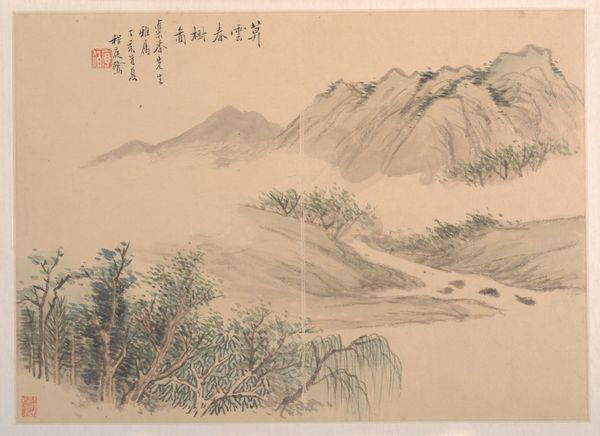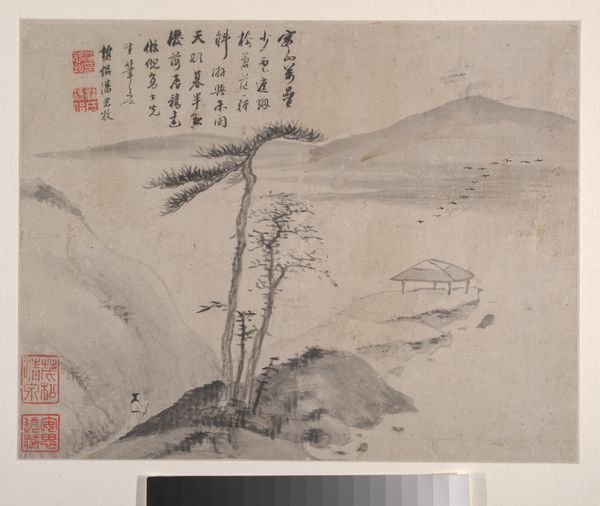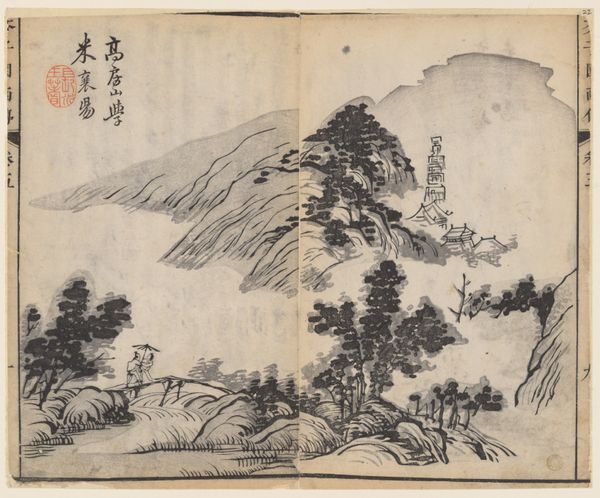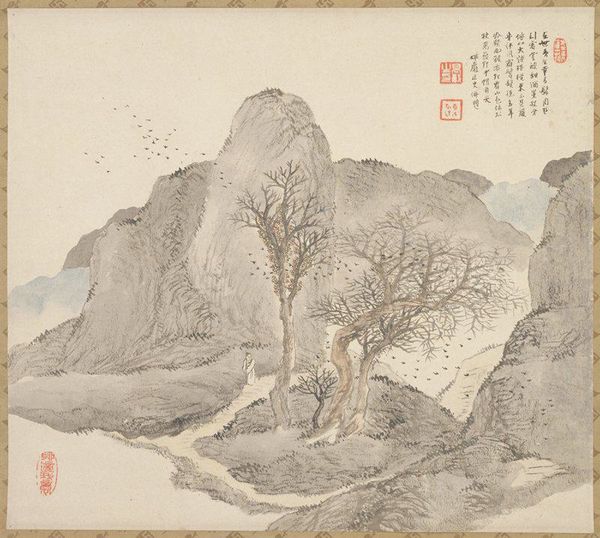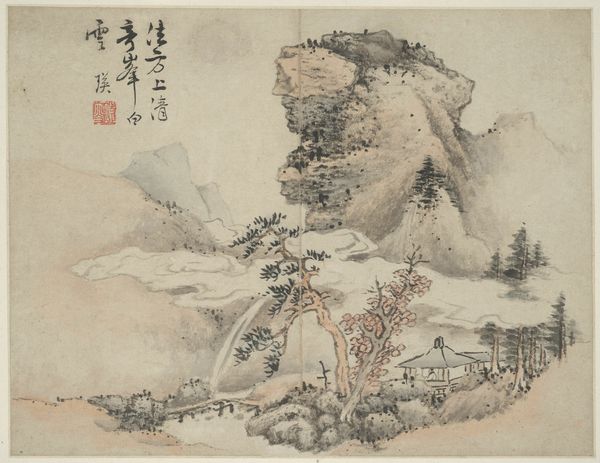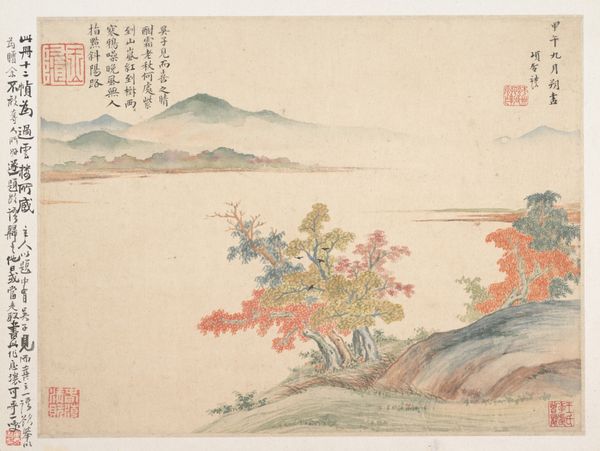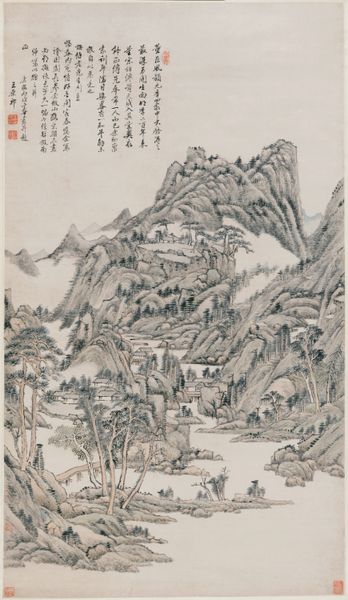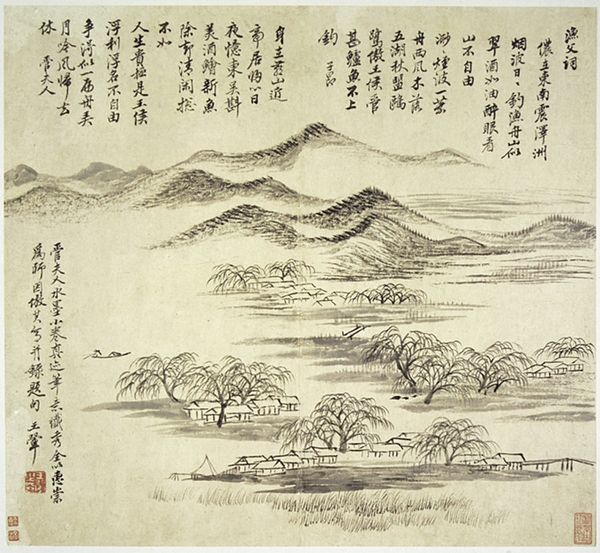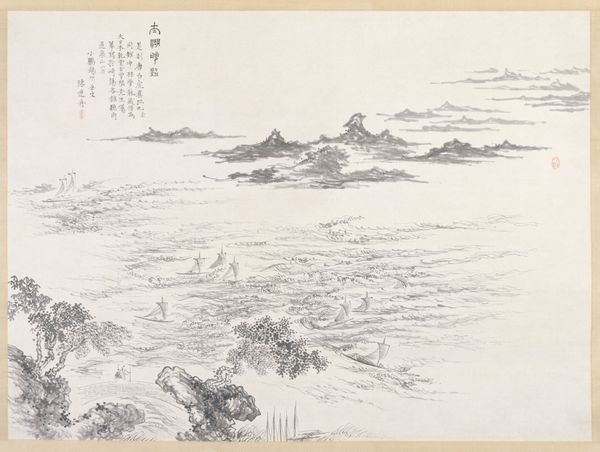
Album of Twelve Nanga-style Landscapes (Kikanchō 奇観幀) 1800 - 1868
0:00
0:00
painting, paper, ink
#
tree
#
aged paper
#
painting
#
book
#
asian-art
#
landscape
#
house
#
paper
#
ink
#
abstraction
#
watercolor
#
calligraphy
Dimensions: 8 7/16 × 5 13/16 in. (21.5 × 14.8 cm)
Copyright: Public Domain
Editor: Here we have a piece called "Album of Twelve Nanga-style Landscapes," created by Tanomura Chokunyu sometime between 1800 and 1868, using ink and watercolor on paper. It’s part of a book, I see. The tones are muted, almost dreamlike, but the mountain and trees give a solid structural form to the art. What are your impressions of this work? Curator: The interplay of ink washes and blank space in this Nanga-style landscape album is critical. Observe how the artist uses varying densities of ink to articulate the recession of space and depth. The mountains, while abstract, are rendered through carefully controlled brushstrokes that suggest mass and volume, creating visual planes through tone and texture alone. How do you perceive the relationship between the calligraphic inscription and the painted landscape? Editor: I see that the calligraphy is not just text, but it balances the composition, almost like another element in the landscape. I find it visually pleasing but also wonder if it contributes to the deeper meaning of the art? Curator: Precisely. It operates on a symbolic and a purely formal level, consider how its verticality is mimicking that of the tree and other landscape features in the piece. The relationship between text and image complicates our interpretation; what appears initially as a representational scene becomes a dialogue between textual and visual systems of signification. What compositional choices affect our interpretation? Editor: Well, the stark contrast in tones highlights the foreground objects more and draws attention, leading us to imagine or envision depth within the composition. Curator: Absolutely, the strategic placements encourage active viewing. Notice the materiality; the absorbent paper, the fluidity of the ink—these are not mere supports, but constitutive elements. They speak to the artist's mastery. The poem could be integrated better in its composition, and its size diminished ever so slightly. Editor: Thank you, I now better appreciate how technique informs the whole. Curator: My pleasure. It encourages us to consider painting’s signifying function and the semiotic interplay, between text and landscape.
Comments
No comments
Be the first to comment and join the conversation on the ultimate creative platform.
